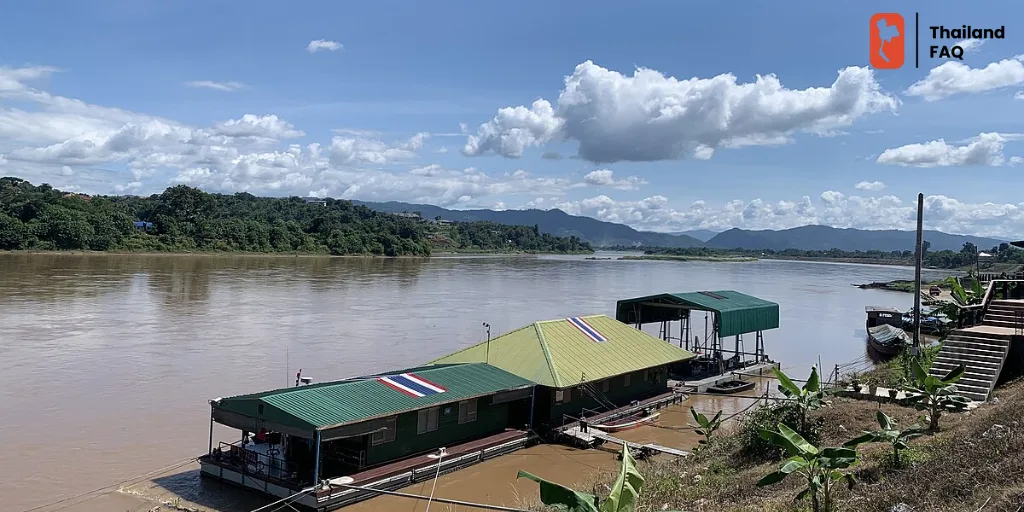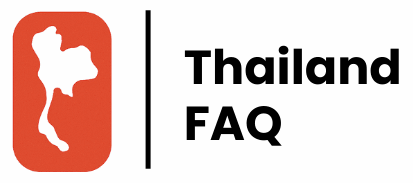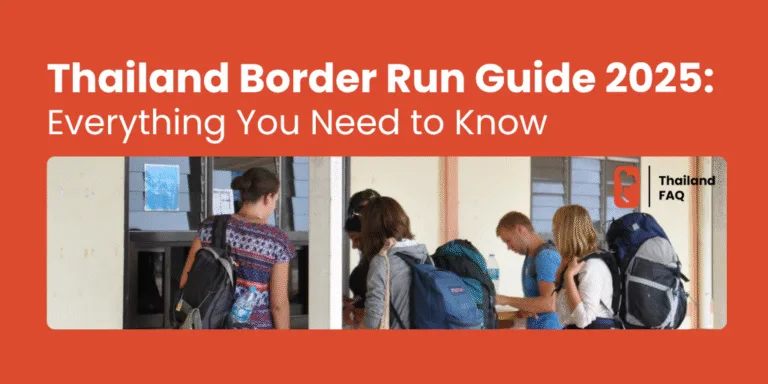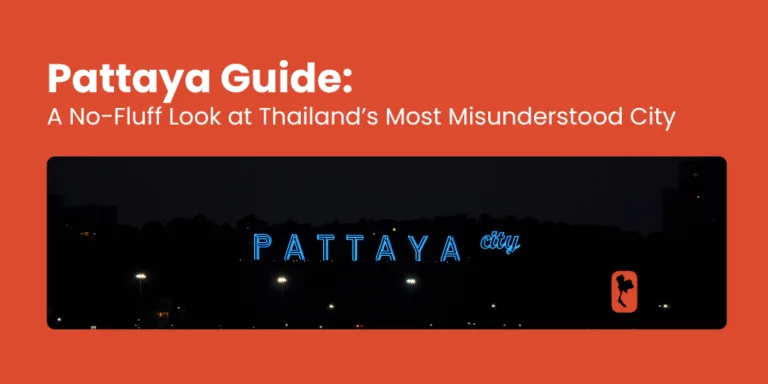Been in Thailand a bit longer than planned, and now your visa’s almost up? Time to figure out the whole Thailand border run situation.
Popular crossings like Mae Sai (Myanmar) and Aranyaprathet (Cambodia) welcome hundreds of travelers each day for border runs. However, with immigration rules getting stricter in 2025, it’s important to understand the process and follow it properly.
Let’s go through everything you need to know, from where to go and what to bring, to how to avoid common mistakes.
What Is a Thailand Border Run?
A border run simply means exiting Thailand briefly to a neighbouring country, like Laos, Cambodia, Malaysia, or Myanmar, and then re-entering via land border to get a new visa-exempt entry stamp. It’s a quick solution for travellers who want to reset their stay without applying for a long-term visa.
Important notes for the Thailand border run in 2025:
- Visa rules can vary based on your nationality.
- Frequent border runs may raise questions with immigration officers. Latest reports state that 2 runs per year are allowed.
- This only applies to land border crossings. Entry via Airport Immigration allows up to 6 visa exemption stamps per year.
When to Do a Border Run
You should plan a Thailand border run before your current permission to stay expires.
If you’re on a 30-day visa exemption or a 60-day tourist visa, mark your calendar and aim to leave a few days early, just in case of travel delays.
Doing a border run too often in a short period can raise red flags. Immigration officers may question your purpose if you re-enter Thailand multiple times without a long-term visa.
A good rule of thumb? Only do a border run if:
- You need a little extra time to sort out a proper visa
- You’re waiting on paperwork for a longer stay
- You haven’t done too many runs recently
Always keep track of your entry stamps and total days in Thailand. Overstaying, even by one day, can lead to fines or future entry problems.
Who Needs to Do a Border Run?
You might need a Thailand border run if:
- Your 30-day visa exemption is about to expire
- You’ve used a tourist visa and want to reset or get a new one
- You’re waiting for a long-term visa or work permit approval
Is a Border Run Legal in Thailand?
Yes, Thailand border runs are legal, as long as you don’t abuse the system.
Thai immigration is aware that people do it, but if you do too many in a short time, you may be denied entry.
They are meant for short-term stays, not permanent loopholes.

How Many Times Can You Do a Thailand Border Run in 2025?
Good news! As of 2025, Thailand has removed the old limit that previously allowed only two land border runs per year under the visa exemption rule.
Now, travelers can do multiple border runs. However, that doesn’t mean unlimited re-entries are guaranteed.
Immigration officers still have the right to deny entry if they believe you’re misusing the system or not entering as a genuine tourist.
- You can now enter Thailand by land more than twice a year
- Too many short visits in a row can still raise red flags
- Flying out and back in remains a common and acceptable option
- Always carry proof of accommodation, funds, and onward travel
- Each entry is up to the discretion of the immigration officer
Can You Fly Out Instead of Land Border Runs?
Yes. Flying to another country and returning is still a Thailand border run; it’s just called a visa run by air.
It often has a higher chance of smooth re-entry than doing land borders repeatedly.
What Do You Need to Bring for a Thailand Border Run?
Make sure you have:
- A valid passport with at least 6 months left
- Proof of onward travel (some borders ask)
- Enough cash (at least 10,000–20,000 THB or equivalent)
- A hotel booking or a reason for re-entry
Always check the border rules ahead of time; some require visas for the neighboring country, too.
How Much Does a Thailand Border Run Cost?
Costs vary based on transport and entry fees:
- Bus to the border: 500–1,000 THB
- Entry/exit fee at border: sometimes free, sometimes 1,000–2,000 THB
- Visa on arrival for neighboring countries (if needed): up to 30 USD
- Food/accommodation (if staying overnight): 500–1,500 THB
Overall, expect to spend 1,500–3,000 THB for a typical Thailand border run.
Can You Still Do Border Runs in 2025?
Yes, but Thai immigration is stricter in 2025. It’s still possible to do a Thailand border run, but not forever.
Use them as a temporary solution while applying for a long-term visa, such as:
- Education visa
- Marriage visa
- Retirement visa
- Business or volunteer visa
What’s the Difference Between a Border Run and a Visa Run?
- Border run: leave and re-enter to get a new entry stamp (no new visa).
- Visa run: leave to apply for a new Thai visa (at the embassy or consulate).
Both involve leaving Thailand, but a visa run gives you a longer stay if approved.
What Happens If You Overstay Instead of Doing a Border Run?
Overstaying in Thailand comes with fines, 500 THB per day, up to 20,000 THB max.
More than 90 days overstay may lead to blacklisting.
That’s why many people choose to do a Thailand border run before their time runs out.
Is There a Service That Helps with Thailand Border Runs?
Yes, multiple visa agencies offer Thailand border run packages. They handle transportation, documents, and timing. This is common in cities like Bangkok, Chiang Mai, and Pattaya.
What Are the Most Popular Border Run Destinations?
The most common Thailand border run points are:
- Mae Sai (Myanmar border) – from Chiang Mai or Chiang Rai
- Aranyaprathet (Cambodia border) – from Bangkok or Pattaya
- Padang Besar (Malaysia border) – from Hat Yai

Border Runs from Bangkok
Bangkok, being the hub and capital of Thailand, offers several convenient options:
Popular Border Crossings:
- Aranyaprathet/Poipet (Cambodia): Most popular for Bangkok border runs. It’s a 4-5 hour drive. Many tour companies offer same-day round-trip services.
- Ban Laem (Cambodia): Quieter than Poipet, though a bit harder to access independently.
How to Do It:
- VIP Vans leave from Victory Monument early in the morning.
- Private taxis are available for faster, more comfortable trips.
Insider Tips:
- Bring at least 2 passport-sized photos and cash (USD or Thai baht) for the Cambodian visa if you’re entering.
- Avoid weekends and Cambodian holidays to reduce waiting times at immigration.
Border Runs from Pattaya
If you’re based in Pattaya, you’re in luck: you’re closer to Cambodia than Bangkok!
Popular Border Crossing:
- Aranyaprathet/Poipet (Cambodia): Again, this is the go-to option.
How to Do It:
- Several tour agencies in Pattaya organize daily border run trips.
- Vans usually depart around 6:00 AM and return around 6:00 PM.
Insider Tips:
- Bring at least 2 passport-sized photos and cash (USD or Thai baht) for the Cambodian visa if you’re entering.
- Avoid weekends and Cambodian holidays to reduce waiting times at immigration.
Border Runs from Phuket
Phuket is farther south, making Malaysia the natural choice.
Popular Border Crossing:
- Sadao Border (Dannok, Malaysia): Closest and most straightforward.
How to Do It:
- Take an early flight to Hat Yai and then a 1-hour taxi to the border.
- Some companies offer package border runs, including transport and meals.
Insider Tips:
- If you plan carefully, you can combine your border run with a mini-vacation in Penang, Malaysia, known for its food scene.
- Malaysian immigration is strict about incomplete departure cards. Double-check your forms!
Border Runs from Chiang Mai
Northern Thailand’s favorite border run is towards Laos.
Popular Border Crossing:
- Chiang Khong – Huay Xai Border (Laos): About a 5-6 hour drive from Chiang Mai.
How to Do It:
- Overnight buses or private car hires are common options.
- Visa on arrival is available for Lao citizens at the border (check for your nationality).
Insider Tips:
- Plan for at least 1 night in Laos, crossings can take time, and you’ll enjoy the Mekong River town atmosphere.
- Double-entry visas for Laos are sometimes easier to obtain than expected if you want to make multiple trips!

Additional Helpful Considerations
- Always have photocopies of your passport, visa stamps, and ID pages. Some crossings require them, better safe than sorry.
- Dress conservatively. Immigration officers sometimes associate casual, scruffy travelers with visa abuse. A neat, polite appearance matters.
- Use official crossings only. Never attempt to use ‘informal’ crossings or border shortcuts. Thailand has strict immigration checks.
- Cash is king. Always carry Thai baht and USD. Many border offices don’t accept cards, and ATMs can be unreliable.
- Stay updated on visa amnesty programs. Sometimes Thailand offers amnesties that allow visa extensions without a border run, worth checking before you travel.
- Book your transport with reputable agencies. Cheap van services can sometimes leave you stranded or rush the border paperwork.
- Limit your border runs. Too many exits and entries can get you flagged by Thai immigration, resulting in denied re-entry or a requirement to obtain a formal visa at a Thai consulate abroad.
- Pre-fill your departure and arrival cards to save time at the border.
- Consider paying a little extra for “express service” to skip long immigration queues (offered unofficially, use with caution).
In Summary: Border Runs Are a Short-Term Solution
So yes, border runs are still doable in 2025, and they can be a total lifesaver if you need a little more time in Thailand. While they can give you more time in Thailand, they’re not a forever solution; frequent use may lead to scrutiny from immigration. If you plan to stay longer, consider transitioning to a proper visa route. With the right approach, you can extend your journey legally, confidently, and without unnecessary risks.
This guide has covered the essential steps, costs, destinations, and risks. Now it’s up to you to use that knowledge wisely, and ideally, to secure a more stable, long-term solution for your time in the Land of Smiles.



